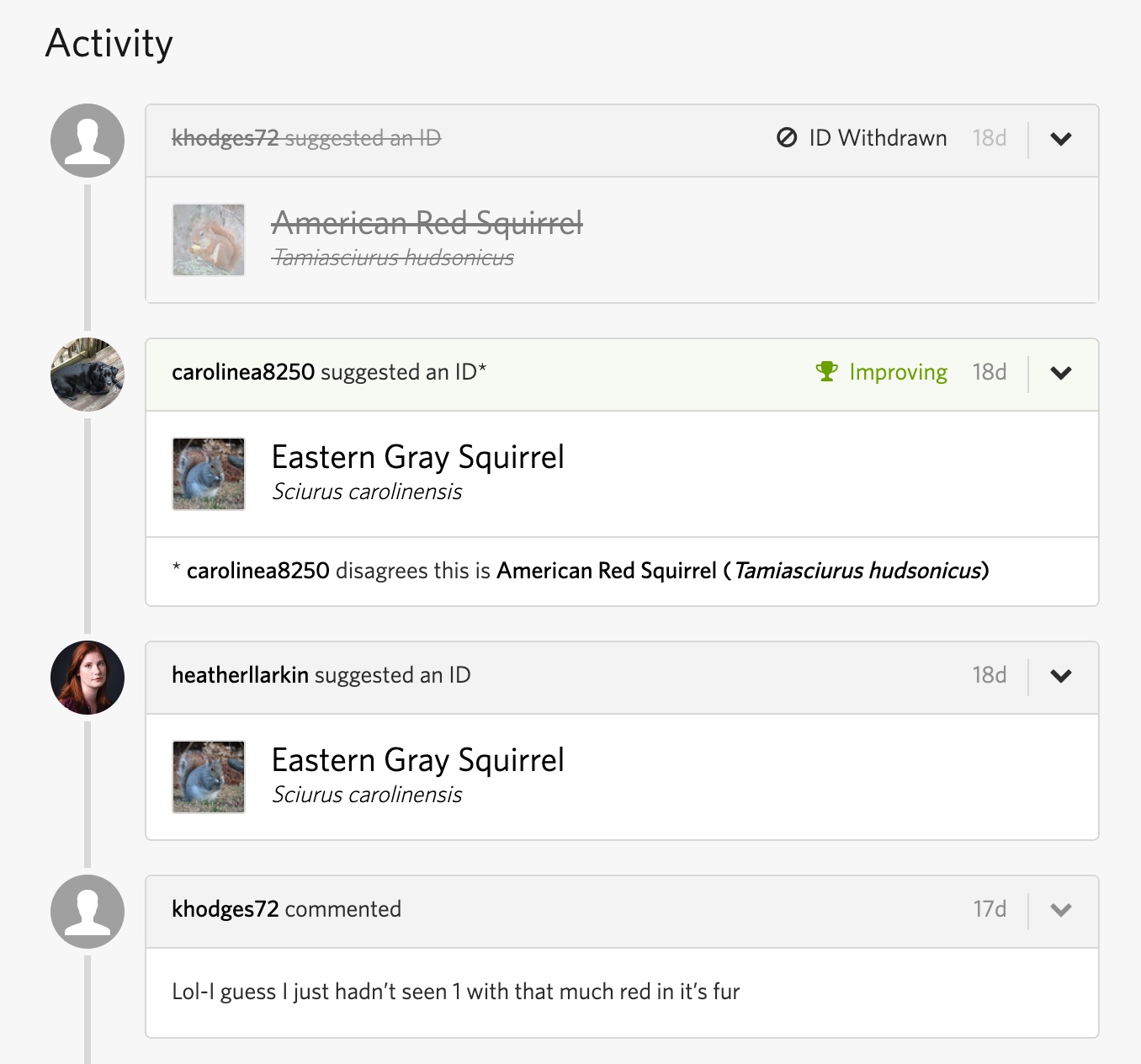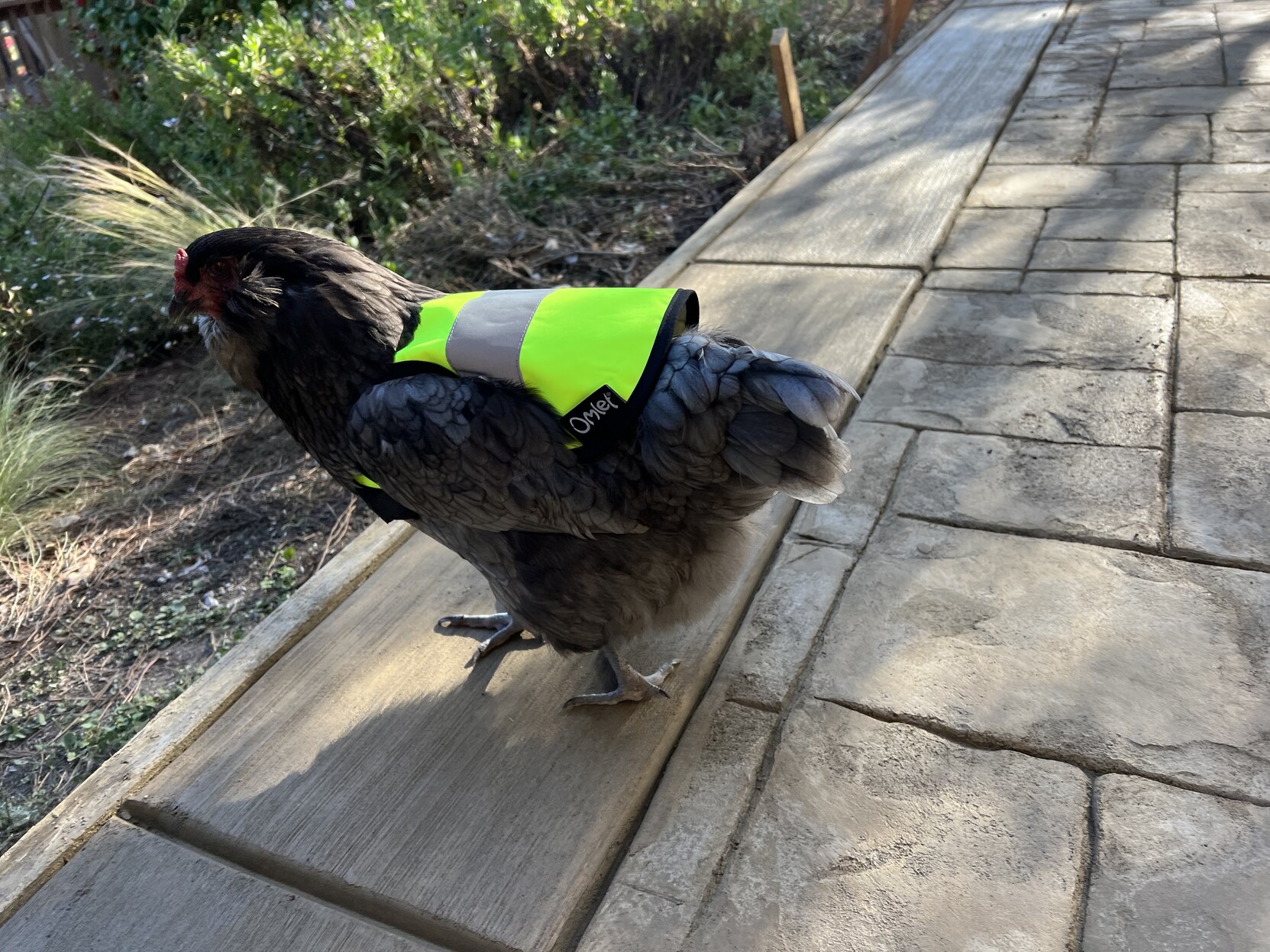Fresh Bananas! Perspective Shifts
Three stories (plus bonii) relating to shifting your perceptions.
The bananas are back! In original form, for now anyway. I keep threatening to convert this whole thing to audio, and change it however I need to make that something good. Some day it’ll happen, maybe soon.
Also I’m no longer sourcing on Twitter, but I doubt you’ll notice a difference in texture, flavor, or aroma.
Today’s crop is about perspective shifts.
Biogoggles, no equipment required. iNaturalist is a different way to browse the world right outside your door. It’s a user-contributed-and-edited set of pictures, names, and reference material of all of the plants and animals spotted in a given area. This is a small cropped image of what my neighborhood looks like in this thing. 75 people have contributed to it and submitted 163 different species. Incredible. The diversity of creatures is dazzling.
When you think of your neighborhood, do you ever think of it in terms of all the living stuff, not just the humans and the dead stuff like the buildings and cars? It’s like a fresh set of eyes and every bit as much a definition of your neighborhood as all the shops and restaurants and speed bumps and roads and houses and neighbors.

And it supports peer review! It lets you beg to disagree and propose changes. Plus, it has a great API apparently, so you can build stuff with it/on top of it.
Here’s the map. Do this: go here, hit the rectangle icon, and then make a rectangle to cover an area near you (or wherever you like) and then toggle over to gallery.
I found this because I was lucky enough to find a thread from Simon Willison in Mastodon and the Fediverse. Simon was sharing a project of his called Owls Near Me, also super cool, that is related back to iNaturalist.
Here’s Simon’s chickens, wearing safety vests:

Simon Willison: “We got safety vests for our chickens when we were…” - Mastodon
Attached: 1 image We got safety vests for our chickens when we were having our new patio built - here’s Azi briefly wearing one (she wasn’t a fan)
Reorientation Field Trips. David at a great blog called Raptitude is experimenting with a course in giving yourself seven different experiences of specific fresh perspectives, as a way to generally keep your brain and outlook healthy. These aren't ideologies or anything creepy like that - they're ways to orient yourself to the world around you. More about time and place than ideas. He has written a bunch about all of the benefits of doing this regularly. It's closed now but here was the landing page. It was a trial run and will likely come back. It cost me $24 and gave me access to seven lesson units as well as a community in which to talk about the results. I’m partway through these exercises and I really like them as a break in the day, that viscerally affects me. I find that I have to space them out, one every several days.
The most recent one I did is called the "Opening Scene" practice and it's heavily based on this original post. To summarize, David has you close your eyes and then open them imagining you were just dropped in to wherever you are, and in to the life you have. Everything that has happened to that moment is backstory and here you are. If you really commit to it as you do it, it gives you just a little mental tweak. A little mindset shift, some food for thought that doesn't need any words or thinking really, maybe a nourishing boost. It's trendy to say "a hit of dopamine" but I have no idea if it does that. It's a nice little experience.
I’d like to have these as a set of cards on my desk, and maybe I’ll make some for myself.
Rats Can Get Down. I include this because I always find reading this flavor of science story to be a good way to instantly take a short mind trip. It also uses the expression "max jerk distribution" as well as "we investigated the mean jerk" - how could they not notice and chortle?
This one is about an experiment where freaky deaky scientists played music for rats and measured their head and body bobbings. Sure enough, for music at 120-140 bpm, rats seem to spontaneously move in sync with the music - no treats or training required!
From the discussion section:
“In this study, we demonstrated that rats displayed spontaneous beat synchronization and neural tuning in the auditory cortex within 120 to 140 BPM, possibly due to short-term adaptation. Both subcortical and thalamocortical pathways are likely responsible for said adaptation (21, 31–35). These results suggest that the optimal tempo for beat synchronization depends on the time constant in the brain, which is conserved across species (17). Previous studies on beat synchronization in animals shaped this behavior through training or exposure to a musical environment (35–40). To the best of our knowledge, this is the first report on innate beat synchronization, except in humans (2).”
The math suggested that it’s more reactive (responding to peaks in neurological stimulation) than predictive (sensing a rhythm and then moving in accordance to that abstracted rhythm rather than a stream of input) but it quickly gets beyond me. The researchers also note that it didn’t seem to be purely reactive:
“Beat synchronization in nonhuman mammals has been characterized as reactive movements to an audible beat (35, 36), while humans commonly exhibit predictive beat synchronization. Our data also showed that the beat synchronization in rats was more reactive than that in humans (fig. S3A). However, the beat synchronization in rats could neither be characterized as being purely reactive nor be explained only by startles, because (i) the jerk increased significantly with the timing of beat at pos. 1 in the original tempo (fig. S3B), (ii) no synchronization was observed at pos. 3 despite the relatively large beat amplitude (figs. S3B and S7A), and (iii) the jerk increase was not aligned with beats at 75% playback tempo although beat amplitudes and evoked neural activities were larger than those in the original tempo (Fig. 1D and figs. S3A and S7). Future studies are still needed to fully identify whether and how the beat synchronization is predictive in rodents and other nonhuman animals.
Regardless of whether it is reactive or predictive, this spontaneous synchronization to beats in rodents might act as an evolutional precursor for predictive synchronization to musical beats in humans, perhaps being necessary but not sufficient for the development of voluntary predictive synchronization.”
(via Rose Eveleth)
Bonus perspective shifting bananas:
The first card catalogs were written on playing cards. (satisfying images here)
Ancient Yemen had serious skyscrapers (also with satisfying images).
Those are all the bananas I have for you today. Same setup as before - you can hit reply and it will go only to me. Send this along to anyone who you think might dig it. Thank you.

